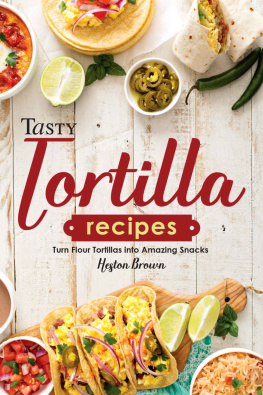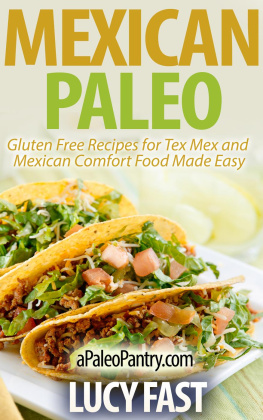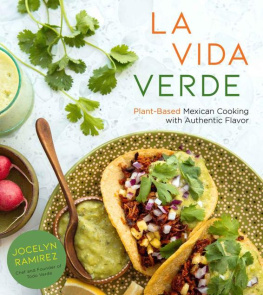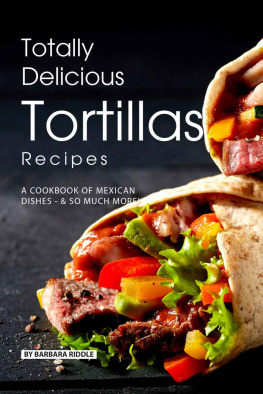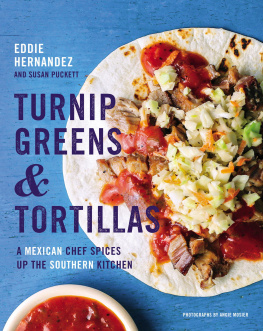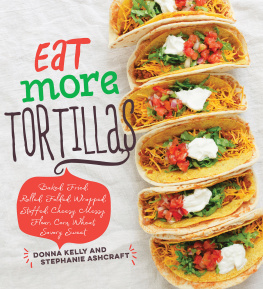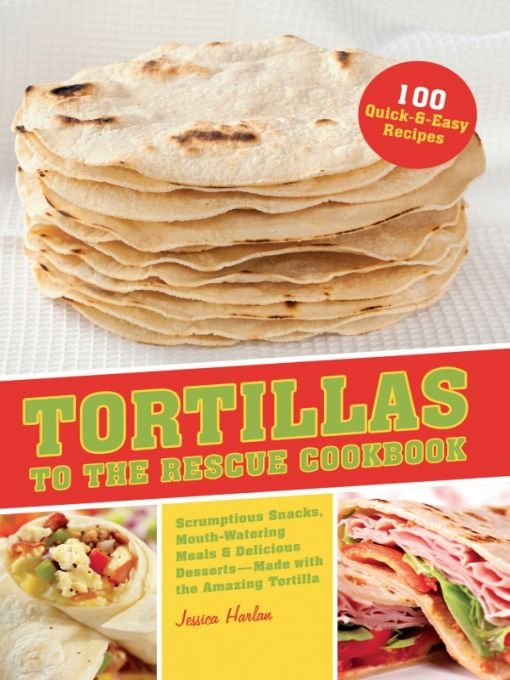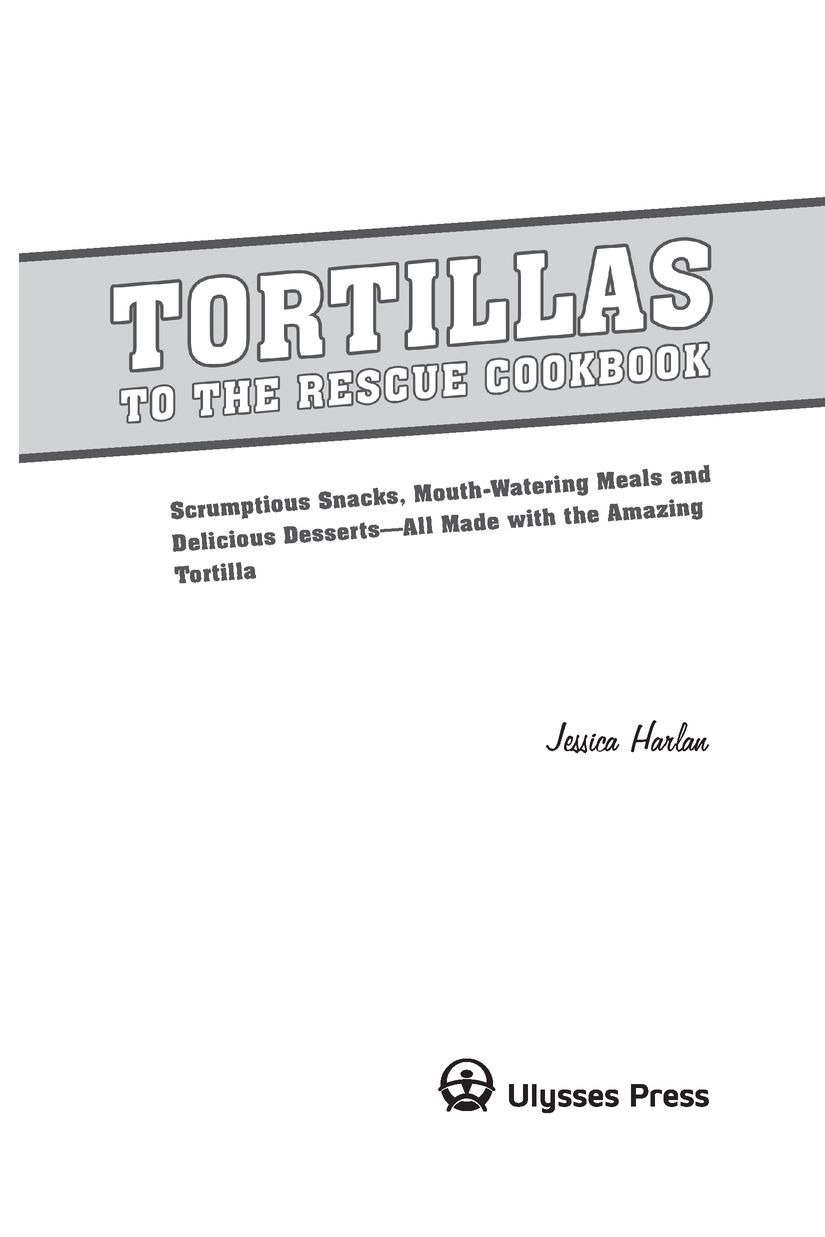Table of Contents
For Chip, Sadie, and Gillian, who make it all worthwhile.And for my
mom, who fed me my first tortillas.
ACKNOWLEDGMENTS
As I was writing this book, I came to realize how many memories and warm associations came to mind of wonderful meals Ive enjoyed as the child of a New Mexican mother. Thanks, Mom, for giving me such a rich culinary background.
I am also appreciative of my friends and extended family who have helped me along the way, tasting recipes, offering suggestions, watching my children when I needed a few hours to work, and offering encouragement when I felt overwhelmed. My husband, Chip, and daughters, Sadie and Gillian, were so supportive, appreciative of even yet another tortilla recipe for dinner, and understanding when work kept me from family time. I couldnt have done it without you!
I feel so grateful to have had the opportunity to write a third cookbook for Ulysses Press, and am truly indebted to my editor Lauren, whos taught me so much about recipe writing, as well as to the rest of the staff, particularly Keith, Kourtney, Alice, and Bryce.
And finally, Ive come to truly appreciate and value my readers and the food community for their support and interest in the books Ive written. I am especially grateful to the bloggers who have taken the time to read my book, try out the recipes, photograph them so beautifully, and write such nice words about them. Thank you.
INTRODUCTION
When I was growing up, my New Mexicoborn mother kept a bag of tortillas in the fridge like other moms kept theirs stocked with bread. Friday nights were enchiladas for my parents and burritos for my brother and me; we thought the enchilada sauce that she made from her precious stash of red chiles (replenished every time we visited my grandma in Santa Fe) was too spicy. Weekend mornings were huevos rancheros, and sometimes wed snack on flour tortillas slathered with butter and sprinkled with cinnamon and sugar. And when we went out to dinner at our favorite neighborhood Mexican restaurant, I loved ripping off pieces of the warm flour tortillas from a seemingly bottomless Styrofoam tortilla warmer, and using the pieces to scoop up dollops of guacamole.
When I was out on my own for the first time, I quickly discovered the versatility of tortillas for myself. They didnt seem to get stale, they were inexpensive, and there was little I couldnt wrap up in the soft, floury rounds. Id use them for everything from traditional burritos to ad hoc hot dog buns.
That was the impetus for this book. With a couple packages of flour or corn tortillas in your fridge, youll always have a good foundation for a delicious meal, from breakfast and dinner to dessert and late-night snacks. You can even use tortillas in unexpected ways: to thicken soups, to bulk up casseroles, and even to make a crust for quiches or pies.
If, like me, you can never get your fill of tortillas, or if youre simply looking for a convenient, inexpensive shortcut ingredient to make easy, fun meals, hopefully this book will help you find a wealth of ways to use tortillas in both traditional and innovative manners.
Tortillas are the #2-selling I bread product in the U.S., after white bread.
Tortillas: A Brief Background
Tortillas are one of the simplest forms of bread, not much more than a mixture of wheat or corn flour, fat, and water, pressed flat and cooked on a hot surface. The word means little cake in Spanish, and theyre a staple in Mexico, other Latin American countries, and the southwestern United States. But if you ever happen to be in Spain, or in a Spanish restaurant, dont expect to be served these flatbreads if you order a tortilla: in Spanish cuisine, a tortilla is actually a savory, pan-cooked cake made of potatoes and eggs, similar to an omelet or an Italian frittata.
The true Mexican tortilla, however, is descended from a flatbread thats been made since 10,000 BC. Legend has it that the first tortilla was made by a Mayan peasant for his hungry king, and he created the dough from dried corn kernels. To make a finer flour for tortillas, the Mayans discovered that they could soak maize (corn), in an alkaline solution to remove the skins from the kernels, a process that is still used today to make masa harina, the corn flour used for modern-day corn tortillas.
When they arrived in the New World in 1519, Cortes and his conquistadores discovered that the Aztecs were making flatbread cakes from maize, which they called tlaxcalli, a native word that the Spanish settlers adapted into their own language as tortilla. For centuries, the tortillas were made by hand, and young women learned the precise techniques of grinding the corn, mixing it with water, patting it flat, and cooking it on hot stones. Later, tortillas were cooked on comals, Mexican stovetop griddles. Eventually tools were developed to make tortillas easier to prepare, such as wooden or metal hand-operated tortilla presses. And since the 1940s, automated machines have been developed to grind the corn and press and cook the tortillas for more efficient, larger-scale production. But even today, some abuelas still make tortillas by hand, and you might be able to peek into the kitchen of authentic Mexican restaurants to see the cooks pressing balls of dough flat and cooking them on griddles.
In old Mexico, tortillas wereand still areused as an eating utensil, a habit picked up by Western cowboys, who discovered the convenience of filling tortillas with meat to make an easy dinner around the campfire. The American settlers of the Southwest, as well as Mexican immigrants to the U.S., helped tortillas gain a place in American cooking, and today its hard to imagine our nation without Tex-Mex, Southwestern, and New Mexican cuisines, all of which include tortillas as an important component.
Homemade tortillas are delicious (try making them yourself using the recipes on page 191), but they require a bit of effort, not to mention some practice to get the tortillas thin enough. Ill make them from scratch if I have time or for a special occasion, but most of the time I keep my fridge stocked with bags of commercial tortillas. In most major cities, you can find tortillas made fresh by local factories.
Tortillas are more popular in the U.S. than any other ethnic breads such as bagels, English muffins, and pita. Refrigerated commercial tortillas account for more than $248 million in sales, according to Snack Food & Wholesale Bakery, June 2011. The Tortilla Industry Association estimates total tortilla sales as more than $6 billion annually.
Buying and Storing Tortillas
While tortillas were originally only made of corn, today you can find them in many varieties, flavors, and sizes. Commercial tortillas can be as small as 6 inches or as large as 10 or 12 inches. You might see them flavored with sun-dried tomatoes, herbs, garlic, chipotle peppers, and more. In the Southwest, you can find blue corn tortillas, which have a stunning dark-blue color and a slightly nutty flavor.
Corn tortillas are generally found only in 6-inch sizes, as theyre more fragile than their flour counterparts. True corn tortillas have the advantage of being gluten-free, but some commercial varieties are made with a combination of corn and wheat flours, so those who are gluten intolerant should double-check the label or call the manufacturer to make sure.



